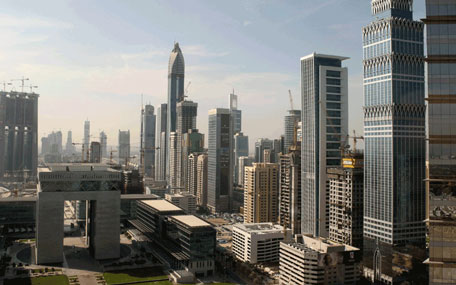John Stevens of Asteco explains why the right service charge makes for a wise property purchase
A beautiful apartment building promising luxury has all the trappings to attract buyers, but as a developer and a potential owner it is advisable to crunch numbers before getting lost in impressions.
The initial outlay to construct a building, or to purchase units, is just the beginning of the long road to property ownership. The more elaborate the space and the fittings, the more costly it can become to maintain. “Yes, it is lovely to have Italian marble and imported sanitary in the common areas, but it does make it more expensive to manage and replace these items in the long run,” says John Stevens, managing director of Asteco Property Management. “Choosing materials that are long lasting, yet requiring minimal maintenance, and are easy to replace when they come off is important.”
To minimise costs, Stevens urges to adopt a policy of design efficiency above all.
“First comes the design, the ratio between common and saleable area is key to efficiency,” he explains, citing the upmarket La Reve in Dubai Marina as an example. “They have a very small common area.”
Large lobbies and corridors may look grand, but all that airy space needs to be cooled. “It’s lovely having that three storey open entrance lobby but that costs a fortune to maintain, especially the air-conditioning.”
Potential owners are advised to look past appearances, and enquire what keeps their units and public spaces in working order, keeping in mind that they will have to pay their fair share to the owners’ association (OA) or developer via service charges to maintain or to increase the value of their property.
Cooling methods
Considering that air conditioning is such a large portion of the bill, special attention should be paid to how a building is being cooled.
“Utilities are an important part of the design, anything from 40-70 per cent of service charges is being spent on them. It’s important to design the building right so it is energy efficient from the start. This is the best way to address this,” Stevens points out.
Separate cooling metres, measured in British thermal unit (BTU), for common areas and individual units are an essential part of the design. “Older buildings don’t always have them. As a result the cooling ends up in the service charge and being paid by everybody,” says Stevens. “As soon as you don’t have BTUs nobody cares about their AC consumption. They go on holiday, leave the air conditioning on and the cost goes through the roof. BTU meters can remove this charge from the service charges, and charge them directly to a unit’s consumption. You still pay it but it changes the service charge if you compare rates.”
Other factors
Another contentious point about potentially increasing service charges is the percentage of owners not paying their dues.
“Larger or lower payment arrears influence service charges. The management needs to have a good financial base as a platform to make sound decisions,” says Stevens. “Larger arrears imply possible legal costs, and in future you’re looking at provisions to meet operations as you don’t have a good rate of collection.”
Although a provision to foreclose on a property in the event of payment failure of service charges does exist in the legal framework regarding OAs, legal recourse remains a grey area. “OA’s aren’t yet legally formed at this moment in time so they are not able to actively pursue that legal avenue themselves,” says Stevens. “However, on two of our properties we are in Dubai Courts and went straight to the phase of foreclosure to recover outstanding debts. So the methodology is there, it’s just that the market isn’t necessarily using these tools at the moment.”
Good management makes a wise buy
Efficient management of a building includes developing effective initiatives to collect service fees, maintaining transparency on money spent and having a dedicated staff on the ground as in a building manager.
According to Stevens, a developer or an OA should refrain from offering a percentage fee to a management company, as that would just encourage managers to run a building more expensively, but rather provide a fixed management fee.
“The property management fee could be anywhere between 2-5 per cent of the total operational budget, usually tending to 2 per cent for larger budgets. The management fee does not increase with the size of a building,” he adds.
A wise property purchase would take into account all of the above. Buying into a property that looks cheaper because of low service fees may look like a gain in the short term, but could rather become a liability in the future; whereas a solid reserve fund and insurance may signify a higher fee but a safer bet in the long run, Stevens explains.
“In the coming years, we expect to see people in the market being far more focused on the financials of an OA, service charges and the rate of collection to make a decision on which properties they would want to buy into and give them comfort that they’re buying into the right property,” says Stevens.
All rights reserved to the initial publisher for Gulf News.
Collected and published by Arms &McGregor International Realty® editorial team. Get in touched with us at [email protected]

